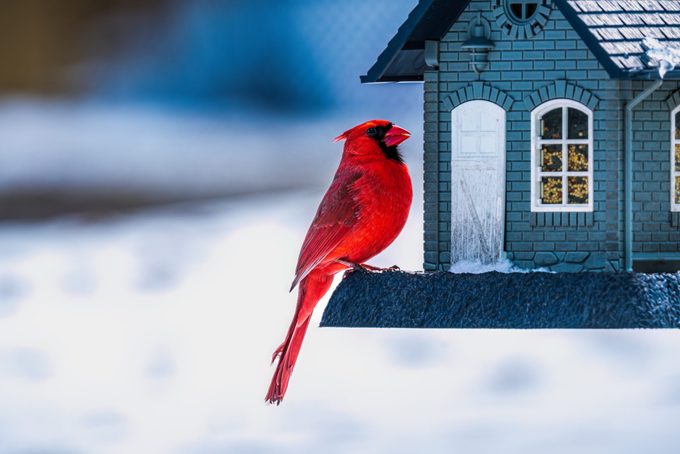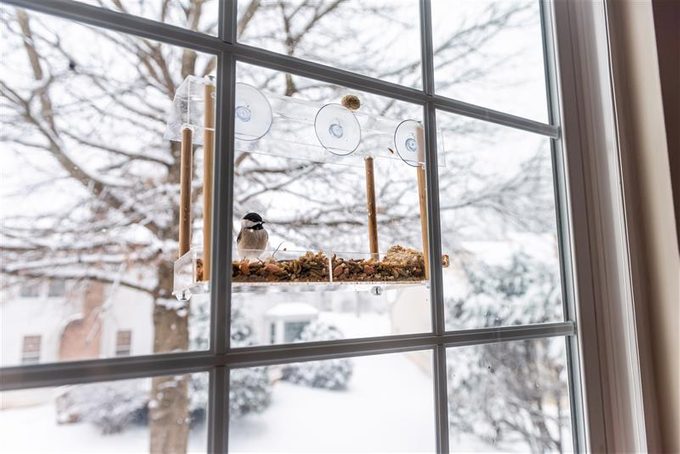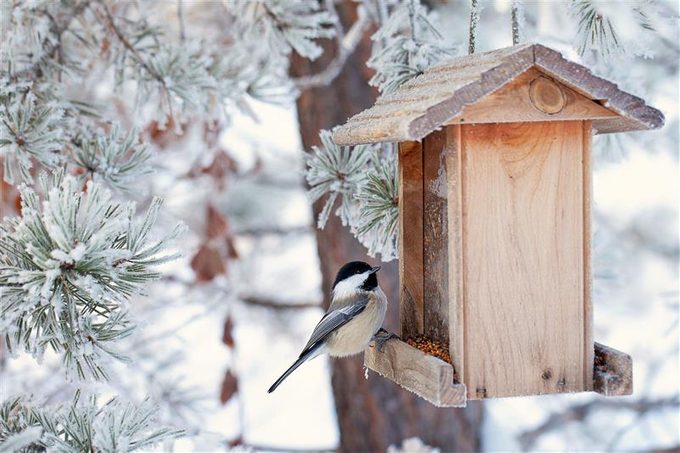
While many birders look forward to spring every year to watch their little chirpy friends fly in, winter birding offers another level of joy.
During the migration period, you only have a few chances (or maybe just once!) to see most birds, which makes winter birding particularly exciting. But of course, there are some birds—like chickadees, robins, and blue jays—that you’ll see more often, and spotting their familiar feathers will bring you a sense of warmth and comfort.
If you’d rather stay indoors during the frosty months instead of venturing outside to watch birds from afar, you can encourage the tweeters to come to you. All you need is an outdoor space with an inviting winter habitat that includes bird feeders and maybe a bath, and birds will be bound to feel welcome in your oasis—and be inclined to stay a while.

Naturally, to attract birds no matter the season, feeder maintenance and cleaning is essential. It’s simple: If you have dry food and clean water, birds will come. Not only that, but dry food can help supply birds with the nutrients they need, while clean water will prevent diseases and parasites from spreading between them.
Try to check on your feeders and baths on a weekly basis to both clean and replenish them. Just scoop out and dispose of any wet or mouldy seed; clean off droppings, debris and puddles; and wash each piece by hand with soap and water. Also, don’t forget to make sure to dry the feeder completely before refilling it with fresh seed. What’s more, you may want to sweep or hose down the area underneath the feeder too, or you’ll risk attracting unwanted four-legged creatures.
Now, you’re probably aware of all the varieties of feeders available—like finch and thistle, platform, and sunflower and peanut—but one feeder is particularly beneficial to have in the winter. Suet feeders are ideal for the cold months because they’re fat-based. That means they call for a mix of raw beef fat and typical bird food like bird seeds and dried bugs to offer food that’s a great source of protein, energy and nutrients that are hard for birds to find in the winter.

How do suet feeders work exactly? They allow birds to perch on the feeder and peck away at a solid chunk of food behind the cage. The reason they’re only really recommended in the winter months is that the fat in these feeders melt, and therefore gets super messy in the heat.
If you’re in the market for a new suet feeder or anything else for winter birding, you’ll want to visit Peavey Mart. In Canada, it’s the leading retail chain for all your birding needs. Think of it as your Birding Headquarters. Peavey Mart offers a vast selection of affordable bird feeders and houses as well as high-quality feed (including blends, critter food, finch feed, nectar, Nyjer seed, peanuts and, of course, suet) for every time of year. If you’re looking to elevate your bird oasis, you can also find bird baths, and if you enjoy watching far away birds when frosty temps roll in, you can scoop up a pair of binoculars, too.
Learn more about Peavey Mart, your Winter Birding Store, at peaveymart.com/pet-birding.
